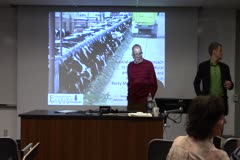Defenses for Fall 2016

Towards Understanding the Role of Natural Variability in Climate Change
December 09, 2016
Jingyuan Li
Natural variability plays a large role in determining surface climate on local and regional scales. Understanding the role of natural variability is crucial for accurately assessing and attributing climate trends, both past and future. One successful way to examine the role of natural variability has been through large ensembles of climate models. This thesis uses the NCAR CESM-LE to test…
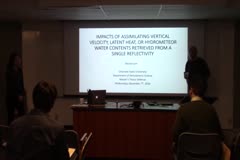
Impacts of Assimilating Vertical Velocity, Latent Heat, or Hydrometer Water Contents Retrieved from a Single Reflectivity Data Set
December 07, 2016
Yoonjin Lee
Assimilation of observation data in cloudy regions has been challenging due to the unknown distribution of cloud drop sizes. Attempts to assimilate data in cloudy regions generally assume a drop size distribution, but most assimilation system fail to maintain consistency between models and the observation data, as each has its own set of assumption. This study tries to retain the consistency…
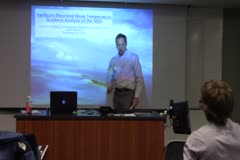
Vertically Resolved Weak Temperature Gradient Analysis of the Madden-Julian Oscillation
December 05, 2016
Brandon Wolding
Interactions between moisture, convection, and large-scale circulations are thought to play an important role in destabilizing the Madden-Julian Oscillation (MJO). A simplified framework for understanding such interactions is developed, building upon the work of Chikira (2014). Tropical weak temperature gradient (WTG) balance is used to diagnose intraseasonal variations in large-scale vertical…
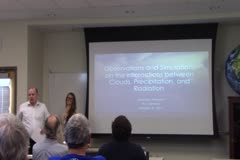
Observations and Simulations of the Interactions between Clouds, Radiation, and Precipitation
October 31, 2016
Alexandra Naegele
The first part of this study focuses on the radiative constraint on the hydrologic cycle as seen in observations. In the global energy budget, the atmospheric radiative cooling (ARC) is approximately balanced by latent heating, but on regional scales, the ARC and precipitation are inversely related. We use precipitation data from the Global Precipitation Climatology Project and radiative flux…
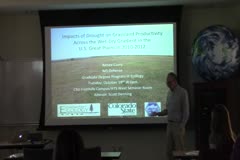
Impact of Drought on Grassland Productivity Across the Wet-Dry Gradient in the U.S. Great Plains in 2010-2012
October 18, 2016
Renee Curry
Severe, prolonged droughts are predicted to occur more frequently due to global climate change. Since grasslands already grow in regions that are water limited, they are particularly vulnerable to changes in precipitation. Climate models are used to investigate how grasslands will respond to climate change; however, current land surface models have difficulty in simulating grasslands and…
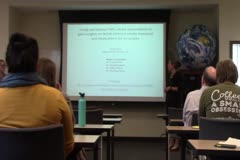
Using Operational HMS Smoke Observations to Gain Insights on North American Smoke Transport and Implications for Air Quality
October 03, 2016
Steven Brey
Wildfires represent a major challenge for air quality managers, as they are large sources of particulate matter (PM) and ozone (O3) precursors. Smoke can be transported thousands of kilometers to deteriorate air quality over large regions. Under a warming climate, fire severity and frequency are likely to increase, exacerbating an existing problem. Using the National Environmental Satellite,…
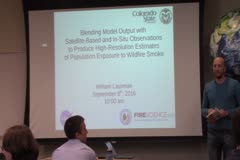
Blending Model Output with Satellite-Based and In-Situ Observations to Produce High-Resolution Estimates of Population Exposure to Wildfire Smoke
September 08, 2016
Will Lassman
In the western US, emissions from wildfires and prescribed fire have been associated with degradation of regional air quality. While atmospheric aerosol particles with aerodynamic diameters less than 2.5 μm (PM2.5) have known impacts on human health, there is uncertainty in how particle composition, concentrations, and exposure duration impact the associated health response. Due to changes…
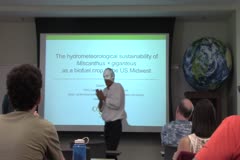
THE HYDROMETEOROLOGICAL SUSTAINABILITY OF MISCANTHUS x GIGANTEUS AS A BIOFUEL CROP IN THE US MIDWEST
September 08, 2016
Gavin Roy
Miscanthus × giganteus (M. × giganteus) is a dense, 3-5 m tall, productive perennial grass that has been suggested to replace corn as the principal source of biofuel for the US transportation industry. However, cultivating a regime of this water-intensive rhizomatous crop across the US Midwest may not be agronomically realistic if it is unable to survive years of low precipitation or…

On Quasi-Periodic Baroclinic Variability in the Extratropical Circulation
August 24, 2016
Brian Crow
A number of recent studies have demonstrated that large-scale extratropical wave activity is characterized by quasi-periodic behavior on timescales of 20-30 days, particularly in the Southern Hemisphere. This phenomenon has been termed the Baroclinic Annular Mode (BAM), and is responsible for the modulation of eddy heat fluxes, eddy kinetic energy, and precipitation on large scales. However,…

